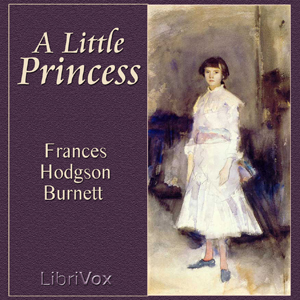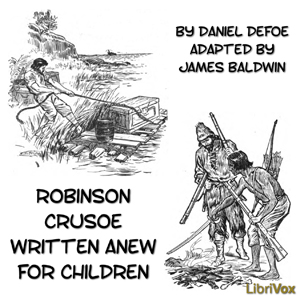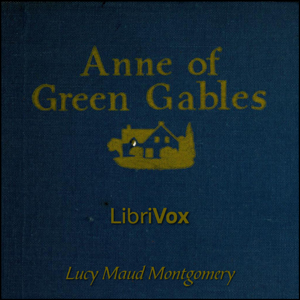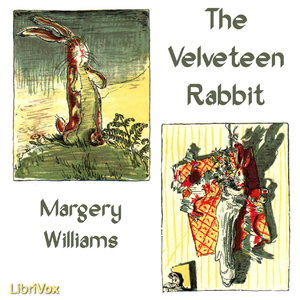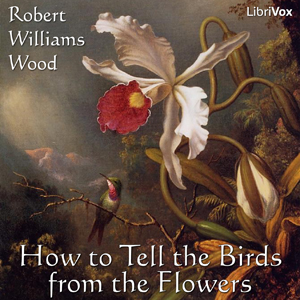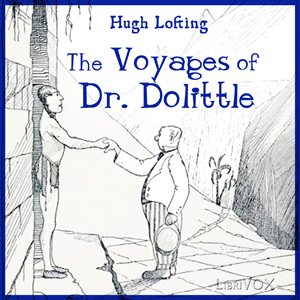Robin Hood is the archetypal English folk hero; a courteous, pious and swashbuckling outlaw of the mediæval era who, in modern versions of the legend, is famous for robbing the rich to feed the poor and fighting against injustice and tyranny. He operates with his "seven score" (140 strong) group of fellow outlawed yeomen – named the Merry Men. He and his band are usually associated with Sherwood Forest, Nottinghamshire.The Victorian era generated its own distinct versions of Robin Hood. The traditional tales were often adapted for children, most notably in Howard Pyle's Merry Adventures of Robin Hood. These versions firmly stamp Robin as a staunch philanthropist, a man who takes from the rich to give to the poor.(Summary from Wikipedia)
22 episodes
Lucy Maud Montgomery’s classic children’s novel, Anne of Green Gables tells the story of a red headed orphan girl with a personality you can’t help but love. Despite her “tragical” past, Anne’s optimism and imagination have helped her to always see the best in things. Anne’s life changes considerably when she is accidentally adopted by the Cuthberts, a brother and sister who thought they were getting a boy to help out on the farm. The Cuthberts decide Anne will have to be sent back to the orphange but before they know it, she has begun to work her way into their hearts. (Summary by Annie Coleman)
38 episodes
Wilhelm Busch war einer der bedeutendsten humoristischen Zeichner und Dichter Deutschlands. Er gilt wegen seiner satirischen Bildergeschichten (u.a. Max und Moritz) in Versen als einer der Urväter des Comics. Die Bilder zu diesem Buch sind im Online Text enthalten. (Zusammenfassung von Wikipedia)
51 episodes
Das berühmte Märchen von Theodor Storm erzählt von einem kleinen Jungen, der Häwelmann hieß. Häwelmann schlief in einem Bett mit Rollen, “wenn er aber nicht müde war, so musste seine Mutter ihn darin in der Stube umherfahren”. - In der Nacht von der diese Geschichte handelt, schlief die Mutter aber so tief ein, daß sie sein Rufen nach “Mehr, mehr!” nicht mehr hören konnte. Und so baute sich Häwelmann aus seinem Nachthemd ein Segel und fuhr allein durch das Zimmer, die Stadt, den Wald und bis in den Himmel hinein, mit lehrreichen Konsequenzen.
(Zusammenfassung von Franziska)
1 episodes
The novel tells of the troubles of a wealthy young girl, Sara Crewe, who is sent to an oppressive London boarding school during her father’s campaign in India. Thanks to Capt. Crewe’s money, Sara is treated as a little princess until, one day, word comes of her father’s tragic death. Miss Minchin, the school’s greedy headmistress, wastes no time in putting the now-penniless Sara to work for her room and board. It is only through the friendship of two other girls, her own resolute nature, and some astonishing luck that Sara eventually finds her way back to happiness. (Summary from wikipedia.org)
19 episodes
Dating back to the 6th century BC, Aesop's Fables tell universal truths through the use of simple allegories that are easily understood. Though almost nothing is known of Aesop himself, and some scholars question whether he existed at all, these stories stand as timeless classics known in almost every culture in the world. This is volume 3 of 12. (Summary by Chip)
25 episodes
Dating back to the 6th century BC, Aesop's Fables tell universal truths through the use of simple allegories that are easily understood. Though almost nothing is known of Aesop himself, and some scholars question whether he existed at all, these stories stand as timeless classics known in almost every culture in the world. This is volume 4 of 12. (Summary by Chip)
25 episodes
Dating back to the 6th century BC, Aesop's Fables tell universal truths through the use of simple allegories that are easily understood. Though almost nothing is known of Aesop himself, and some scholars question whether he existed at all, these stories stand as timeless classics known in almost every culture in the world. This is volume 5 of 12. (Summary by Chip)
25 episodes
Dating back to the 6th century BC, Aesop's Fables tell universal truths through the use of simple allegories that are easily understood. Though almost nothing is known of Aesop himself, and some scholars question whether he existed at all, these stories stand as timeless classics known in almost every culture in the world. This is volume 6 of 12.(Summary by Chip)
25 episodes
Dating back to the 6th century BC, Aesop's Fables tell universal truths through the use of simple allegories that are easily understood. Though almost nothing is known of Aesop himself, and some scholars question whether he existed at all, these stories stand as timeless classics known in almost every culture in the world. This is volume 7 of 12.(Summary by Chip)
25 episodes
Dating back to the 6th century BC, Aesop's Fables tell universal truths through the use of simple allegories that are easily understood. Though almost nothing is known of Aesop himself, and some scholars question whether he existed at all, these stories stand as timeless classics known in almost every culture in the world. This is volume 8 of 12.(Summary by Chip)
24 episodes
Dating back to the 6th century BC, Aesop's Fables tell universal truths through the use of simple allegories that are easily understood. Though almost nothing is known of Aesop himself, and some scholars question whether he existed at all, these stories stand as timeless classics known in almost every culture in the world. This is volume 9 of 12.(Summary by Chip)
25 episodes
In this children's classic, a girl named Alice follows falls down a rabbit-hole into a fantasy realm full of talking creatures. She attends a never-ending tea party and plays croquet at the court of the anthropomorphic playing cards. (Summary written by Gesine)"I loved all the voices in this project and probably wouldn’t have put the time into checking into this book without this LibriVox version of it. Great project and well done by all. What people can do really amazes me from time to time. This reminds me of how beautiful the world can be." — skinned mink
12 episodes
Struwwelpeter (Slovenly Peter) is an illustrated collection of humorous children’s poems describing ludicrous and usually violent punishments for naughty behavior. Hoffmann, a Frankfurt physician, wanted to buy a picture book for his son for Christmas in 1844. Not impressed by what the stores had to offer, he instead bought a notebook and wrote his own stories and pictures. While Struwwelpeter is somewhat notorious for its perceived brutal treatment of the erring children, it has been influential on many later children’s books, most notably Charlie and the Chocolate Factory. (Summary by Catharine, Kara, and wikipedia.org)
1 episodes
Our Island Story was first published in 1905 and became an instant classic. Beginning with the Romans and following the triumphs and foibles of the good, not so good and the downright despicable figures of history; we are treated to a dazzling montage of kings, queens, barons, knights, explorers, movers and shakers that have played a key role in the history of England. Marshall freely mixes folk tale with historical fact and in so doing paints a very vivid picture of the past in a style reminiscent of all that is finest in the children’s story telling tradition.This is the first section of that work and will carry you from the time when Tacitus first sang the praises of Britannica to his Roman readers up to the vicious and bloodthirsty confusion that is the War of the Roses (about 1500 years). (Summary by Jim)Part 2 of this book may be found at http://librivox.org/our-island-story-part-2-by-he-marshall/.
55 episodes

Our Island Story was first published in 1905 and became an instant classic. Beginning with the Romans and following the triumphs and foibles of the good, not so good and the downright despicable figures of history; we are treated to a dazzling montage of kings, queens, barons, knights, explorers, movers and shakers that have played a key role in the history of England. Marshall freely mixes folk tale with historical fact and in so doing paints a very vivid picture of the past in a style reminiscent of all that is finest in the children’s story-telling tradition. This is the second section of that work and will carry you from the convoluted and bloody ‘Wars of the Roses’ up to the death of Queen Victoria and the resolution of the Boer War. Please be advised that this book was written in the early years of the 20th century and there will be words and phrases used then, in all innocence, that are considered politically incorrect in this age. It’s perfectly fine for children to listen to but please ensure there is someone on hand who can explain these terms in a mature fashion.(Summary by Jim)Part 1 of this book may be found at https://librivox.org/our-island-story-part-1-by-he-marshall/.
57 episodes

Mary Everest Boole (1832-1916) was born Mary Everest in England and spent her early years in France. She married mathematician George Boole. She was the author of several works on teaching and teaching mathematics in particular.
This short book, Philosophy and Fun of Algebra, is meant to be read by children and introduces algebra and logic. She uses the word “algebra” broadly, defining it as a “method of solving problems by honest confession of one’s ignorance”. Using this definition, Boole introduces, in a conversational manner, the concepts of logic and algebra, illustrating these concepts with stories and anecdotes, often from biblical sources. At times, her discussion seems somewhat mystical, speaking of the imagination and angels as messengers which guide one toward the next step in a logical investigation. Boole ends the book with a reminder that algebra’s essential element is “the habitual registration of the exact limits of one’s knowledge” and a call for the public to keep this principle in mind when encountering any situation.
(Summary written by Patricia Oakley)
18 episodes
Adaptation of the story of Robinson Crusoe for grammar school children. Tells how the shipwrecked sailor makes a new life for himself on the island, providing shelter, food, and clothing for himself from the few tools he rescued from the ship and what he is able to find on the island. He lives on the island over twenty years before he is finally rescued and during that time must re-invent almost everything necessary for daily sustenance. (Summary from The Baldwin Project.)
15 episodes
This is the story of seven incorrigible children living near Sydney in the 1880’s with their military-man father, and a stepmother who is scarcely older than the oldest child of the family. A favourite amongst generations of children for over a century, this story tells of the cheeky exploits of Meg, Pip, Judy, Bunty, Nell, Baby, and The General (who is the real baby of the family), as well as providing a fascinating insight into Australian family life in a bygone era. (Summary by Ophelia Darcy)
13 episodes
Written in 1921, this is the final book in L. M. Montgomery's Anne of Green Gables series. Set during World War I, it shows the courage and endurance of the sisters, mothers and wives (and brothers and fathers) left to tend the home front. The main focus of the book is on Anne and Gilbert’s youngest daughter, Rilla. (Summary by Karen Savage)
Other books in this series by this reader:
Anne of Green Gables
Anne of Avonlea
Anne of the Island
Anne's House of Dreams
Rainbow Valley
32 episodes

The "Little Wizard Stories of Oz" are six short stories written by L. Frank Baum in 1913. By all accounts, Baum intended to finish the Oz series with "The Emerald City of Oz," published in 1910. Following that, he attempted to write non-Oz books, publishing "The Sea Fairies" in 1911 and "Sky Island" in 1912. But, (as Baum himself laments in the prefaces of many of his Oz books,) his "little tyrants" were only interested in hearing more Oz stories. So in 1913, he returned to writing about Oz, putting out both The "Little Wizard Stories" and "The Patchwork Girl of Oz" that year.
According to this comprehensive Oz FAQ site, The Little Wizard Stories were geared toward younger children and were originally published separately, "similar in style to today's Little Golden Books." The next year, they were published together as one volume.
Each Little Wizard Story revolves around the adventures of two famous Oz characters, and their humorous adventures in and around the land of Oz. (Summary by Maddie)
6 episodes
Lucy Maud Montgomery’s classic children’s novel, Anne of Green Gables tells the story of a red headed orphan girl with a personality you can’t help but love. Despite her “tragical” past, Anne’s optimism and imagination have helped her to always see the best in things. Anne’s life changes considerably when she is accidentally adopted by the Cuthberts, a brother and sister who thought they were getting a boy to help out on the farm. The Cuthberts decide Anne will have to be sent back to the orphange but before they know it, she has begun to work her way into their hearts. (Summary by Annie Rothenberg)
38 episodes
This version of the classic tale of the three bears has a heroine named Golden Hair. The jolly bears, instead of chasing her away from their home, come to live with her at Grandmother's house. The recording can be enjoyed by itself, or you can read along with the Library of Congress facsimile version from the International Children's Digital Library: Here.
1 episodes
Paralyzed in an accident while a baby, young Prince Dolor is imprisoned in a lonely tower by his usurping uncle. He is visited by his mysterious godmother who provides him with magical gifts, including a travelling cloak that allows him to fly across the land. He uses his gifts to return to his rightful place on the throne. Also included are several short stories by the author also featuring princes. (Chapters 12-15) (Summary by Alys)
15 episodes
Dating back to the 6th century BC, Aesop's Fables tell universal truths through the use of simple allegories that are easily understood. Though almost nothing is known of Aesop himself, and some scholars question whether he existed at all, these stories stand as timeless classics known in almost every culture in the world. This is volume 1 of 12. (Summary by Chip)
26 episodes
The Marvelous Land of Oz is the second of the Oz books. It follows the adventures of the Scarecrow, the Tin Woodman and Tip. The Emerald City has been taken over by the Army of Revolt, and our adventurous friends need the help of Glinda the Good to return it to its rightful ruler.(Summary by Paul Harvey)
25 episodes
Dating back to the 6th century BC, Aesop's Fables tell universal truths through the use of simple allegories that are easily understood. Though almost nothing is known of Aesop himself, and some scholars question whether he existed at all, these stories stand as timeless classics known in almost every culture in the world. This is volume 10 of 12.
(Summary by Chip)
25 episodes
Dating back to the 6th century BC, Aesop's Fables tell universal truths through the use of simple allegories that are easily understood. Though almost nothing is known of Aesop himself, and some scholars question whether he existed at all, these stories stand as timeless classics known in almost every culture in the world. This is volume 11 of 12.
(Summary by Chip)
25 episodes
Dating back to the 6th century BC, Aesop's Fables tell universal truths through the use of simple allegories that are easily understood. Though almost nothing is known of Aesop himself, and some scholars question whether he existed at all, these stories stand as timeless classics known in almost every culture in the world. This is volume 12 of 12.
(Summary by Chip)
9 episodes
Dating back to the 6th century BC, Aesop's Fables tell universal truths through the use of simple allegories that are easily understood. Though almost nothing is known of Aesop himself, and some scholars question whether he existed at all, these stories stand as timeless classics known in almost every culture in the world. This is volume 2 of 12. (Summary by ChipDoc)
25 episodes
The Prince and the Pauper (1882) represents Mark Twain's first attempt at historical fiction. The book, set in 1547, tells the story of two young boys who are identical in appearance: Tom Canty, a pauper who lives with his abusive father in Offal Court, London, and Prince Edward son of Henry VIII of England. Due to a series of circumstances, the boys accidentally replace each other, and much of the humor in the book originates in the two boys' inability to function in the world that is so familiar to the other (although Tom soon displays considerable wisdom in his decisions). In many ways, the book is a social satire, particularly compelling in its condemnation of the inequality that existed between the classes in Tudor England. In that sense, Twain abandoned the wry Midwestern style for which he was best known and adopts a style reminiscent of Charles Dickens. (Summary from Wikipedia.org)
20 episodes
Plenty of princesses have been cursed by wicked witches, but the curse placed on this princess by her evil aunt is an unusual one: it removes all the princess's gravity. What can break the curse before the princess floats away? Perhaps the best thing for her would be to fall in love, but how a person with no gravity can fall in anything is just the problem. (summary by LauraFox)
15 episodes
The Five Little Peppers series was created by Margaret Sidney covering the life of five children with the surname Pepper. The Pepper children were very poor, and their widowed mother was left to raise them by herself. In order of age (descending), the children's names were Ben (Ebaniezer), Polly (Mary), Joel, Davie, and Phronsie. Five Little Peppers and How They Grew is the first book in the series. (Summary from Wikipedia)
25 episodes
Lucy Maud Montgomery's classic children's novel, Anne of Green Gables tells the story of a red headed orphan girl with a personality you can't help but love. Despite her "tragical" past, Anne's optimism and imagination have helped her to always see the best in things. Anne's life changes considerably when she is accidentally adopted by the Cuthberts, a brother and sister who thought they were getting a boy to help out on the farm. The Cuthberts decide Anne will have to be sent back to the orphange but before they know it, she has begun to work her way into their hearts. (Summary by Annie Coleman)
38 episodes
A classic collection of oral German folklore, brought together for posterity by the scholarly brothers Grimm in the 1800s, this epitome of fairy tales includes many of the world’s best known stories. In these dark foreboding woods, you will find: Rapunzel, Hansel and Gretel, Rumpelstiltskin, Lily and the Lion (better known as Beauty and the Beast), and Snow White and Rose Red, among other timeless works. These tales were later heavily revised and sanitised, but here are presented closer to their grim and beloved originals. (Summary by Marlo Dianne)
63 episodes
A charming little book full of the most gorgeous illustrations which can be viewed along with the Gutenberg text at http://www.gutenberg.org/etext/15661. We see a number of stories in which kindness is rewarded and selfishness is punished but Brooke squeezes a number of intriguing and quite bizarre twists and turns into the story so it is not nearly so predictable as you might imagine. Victorian moral fairy tales from a delightfully inventive mind. (Summary by Jim)
4 episodes
In The Story of Doctor Dolittle (1920), the first of Hugh Lofting's Doctor Dolittle books, we are introduced to the good doctor who gives up treating people after Polynesia, his parrot, teaches him animal languages. His fame in the animal kingdom spreads throughout the world and soon he sets off to cure a monkey epidemic in Africa, finding all sorts of exciting adventures on the way.
This recording is of the original edition, which is in the public domain. Later editions, which are still under copyright, changed some language and plot elements that are considered racially derogatory. (Summary adapted from wikipedia.org by Annie Coleman)
22 episodes
"What is REAL?" asked the Rabbit one day...
Written in 1922, The Velveteen Rabbit, or, How Toys Become Real is the tale of a sweet unassuming toy rabbit who questions what it is to live and to love. It was the first children's title written by Margery Williams (1881 - 1944), who had previously created only for adults. This story eclipsed all others, to become her most famous work, and an ever adored classic for all ages. (Summary written by Marlo Dianne)
"It was by a sort of accident that The Velveteen Rabbit became the beginning of all the stories I have written since…By thinking about toys and remembering toys, they suddenly become very much alive. Toys I had loved as a little girl--my almost forgotten Tubby, who was the rabbit, and Old Dobbin, the Skin Horse, and the toys my children had loved." -- Margery Williams
1 episodes
Anfang des 19. Jahrhundert begannen die Brüder Jacob und Wilhelm Grimm, traditionelle, bisher vor allem mündlich weitergegebene Erzählungen zusammenzutragen. Diese Sammlung ist als die Märchen der Gebrüder Grimm weltbekannt geworden und umfaßt so berühmte Geschichten wie Rapunzel, Hänsel und Gretel, Rumpelstilzchen, Rotkäppchen und viele andere. Diese Märchen wurden später stark editiert und beschönt. Die hier vorliegenden Versionen entsprechen aber stärker den originalen, teils drastischen Fassungen.
(Zusammenfassung von Rainer)
72 episodes
Anfang des 19. Jahrhunderts begannen die Brüder Jacob und Wilhelm Grimm, traditionelle, bisher vor allem mündlich weitergegebene Erzählungen zusammenzutragen. Diese Sammlung ist als die Märchen der Gebrüder Grimm weltbekannt geworden und umfaßt so berühmte Geschichten wie Rapunzel, Hänsel und Gretel, Rumpelstilzchen, Rotkäppchen und viele andere. Diese Märchen wurden später stark editiert und 'beschönt'. Die hier vorliegenden Versionen entsprechen aber stärker den originalen, teils drastischen Fassungen.
(Zusammenfassung von Rainer)
38 episodes
The Adventures of Tom Sawyer (published 1876) is a very well-known and popular story concerning American youth. Mark Twain's lively tale of the scrapes and adventures of boyhood is set in St. Petersburg, Missouri, where Tom Sawyer and his friend Huckleberry Finn have the kinds of adventures many boys can imagine: racing bugs during class, impressing girls, especially Becky Thatcher, with fights and stunts in the schoolyard, getting lost in a cave, and playing pirates on the Mississippi River.
One of the most famous incidents in the book describes how Tom persuades his friends to do a boring, hateful chore for him: whitewashing (i.e., painting) a fence.
This was the first novel to be written on a typewriter.
(Summary from Wikipedia)
17 episodes
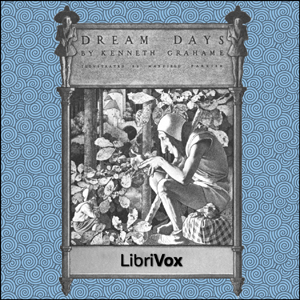
Dream Days is a collection of children's fiction and reminiscences of childhood written by Kenneth Grahame. A sequel to Grahame's 1895 collection The Golden Age (some of its selections feature the same family of five children), Dream Days was first published in 1898 under the imprint John Lane: The Bodley Head. (The first six selections in the book had been previously published in periodicals of the day—in the Yellow Book, the New Review, and in Scribner's Magazine in the United States.) The book is best known for its inclusion of Grahame's classic story The Reluctant Dragon. Like its precursor volume, Dream Days received strong approval from the literary critics of the day. In the decades since, the book has perhaps suffered a reputation as a thinner and weaker sequel to The Golden Age—except for its single hit story. In one modern estimation, both books "paint a convincingly unsentimental picture of childhood, with the adults in these sketches totally out of touch with the real concerns of the young people around them, including their griefs and rages." Its concern is chiefly with the lands of imagination, ranging from a reconnaisance of men of solitude, a disastrous introduction of a girl to the narrator's private castle in the clouds, derring-do on the high seas, and, of course, an encounter with a dragon. Its concluding bittersweet story bids a reluctant farewell to the dream days of childhood. (Summary by Wikipedia and Catharine Eastman)
9 episodes
How do you tell apart a parrot from a carrot? A plover from a clover? A bay from a jay? Although there are several ways of differentiating, R. W. Wood’s use of pun and rhyme is one of the most entertaining! (Summary by Andrea L.)
1 episodes
In the sequal to The Story Girl Sara Stanley returns to join the King children in publishing their own local magazine to entertain the town of Carlisle.
34 episodes
Deep in the heart of every parent is the wish, the desire, to have other adults tell us, in an unsolicited way, just how very polite one’s child is! This perhaps was even more the case in 1903, when Gelett Burgess produced his second book on the Goops. With entertaining cartoons - cariacatures of misbehaving children - he described many different breaches of tact and good manners.
Burgess wrote several books of poetry on the Goops, each poem describing some significant way in which an unthoughtful or unkind child could offend polite society and often offering the hope that the listener would never behave that way. Ahem! Well, perhaps very few people have succeeded in not acting Goop-like at some point in their lives, but read along with Burgess as he attempts to define, in a humorous fashion, exactly what the differences between “Good” and “Goop” are!(Summary by Mark F. Smith)
1 episodes

Le avventure di Pinocchio. Storia di un burattino è il titolo del romanzo ottocentesco che ha come protagonista un notissimo personaggio di finzione, appunto Pinocchio, burattino di legno al centro di celeberrime avventure. Si tratta di un classico della cosiddetta letteratura per ragazzi e fu scritto nel 1881 da Collodi (pseudonimo dello scrittore Carlo Lorenzini).
Il personaggio di Pinocchio - burattino umanizzato nella tendenza a nascondersi dietro facili menzogne e a cui cresce il naso in rapporto ad ogni bugia che dice - è stato fatto proprio con il tempo anche dal mondo del cinema e da quello dei fumetti. Sulla sua figura sono stati inoltre realizzati album musicali e allestimenti teatrali in forma di musical.
Nelle intenzioni di Collodi pare non vi fosse quella di creare un racconto per l’infanzia: nella prima versione, infatti, il burattino moriva, impiccato a causa dei suoi innumerevoli errori. Solo nelle versioni successive, pubblicate a puntate su un quotidiano (il Giornale per bambini), la storia venne modificata con il classico finale che oggi si conosce, con il burattino che assume le fattezze di un ragazzo in carne ed ossa.
(Summary from Wikipedia)
36 episodes
This story of Santa Claus veers away slightly from the traditional stories of his beginnings. L. Frank Baum creates a world of fantasy that surrounds Santa Claus's life. Orphaned at an infant he is found by the nymph Necile, who convinces the great Ak to allow her to raise Claus for her own. As he grows older he meets his fellow humans, and sees the neglect of children. This sets him on the path to making toys and becoming the beloved Saint Nicholas we are familiar with today. (summary by Kri)
12 episodes
The Just So Stories for Little Children, first published in 1902, were written by British author Rudyard Kipling. They are a collection of fantastic stories, typically about how various animals came to be the way they are today. (Summary by Reynard with help from Wikipedia)
12 episodes
Peterchens Mondfahrt ist ein Märchen für Kinder von Gerdt von Bassewitz. Es handelt von den Abenteuern des Maikäfers Herr Sumsemann, der zusammen mit den Menschenkindern Peter und Anneliese zum Mond fliegt, um von dort sein verlorengegangenes sechstes Beinchen zu holen. 1911 erschien die Geschichte zuerst als Theaterstück, 1915 dann als Buch mit Illustrationen von Hans Baluschek. Die Geschichte gilt heute als ein Klassiker der deutschen Kinder- und Jugendliteratur. - (Zusammenfassung von Wikipedia)
14 episodes
Doctor John Dolittle is the central character of a series of children's books by Hugh Lofting. He is a doctor who shuns human patients in favour of animals, with whom he can speak in their own languages. He later becomes a naturalist, using his abilities to speak with animals to better understand nature and the history of the world.(summary from Wikipedia)
61 episodes




